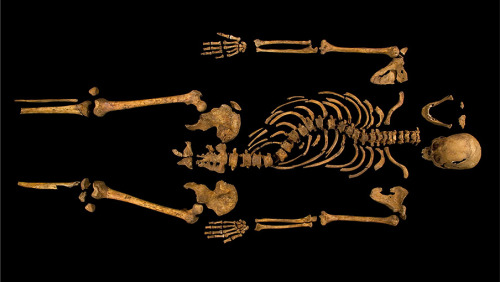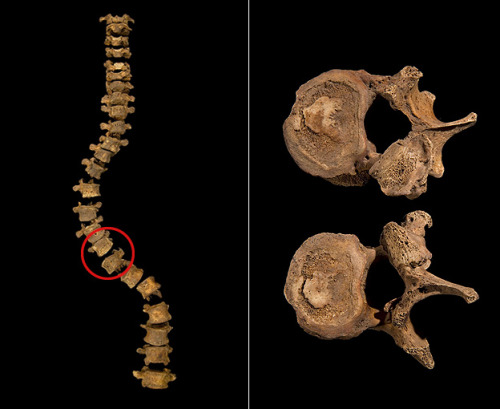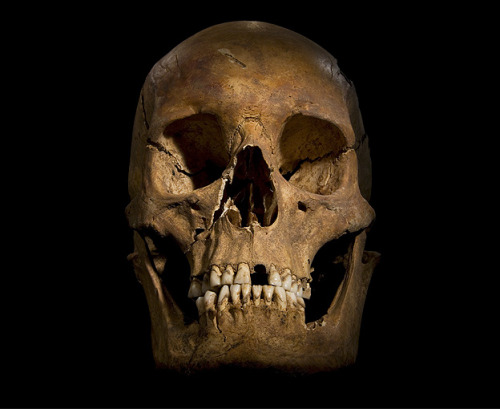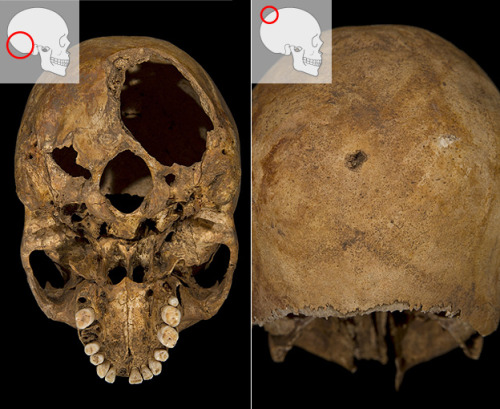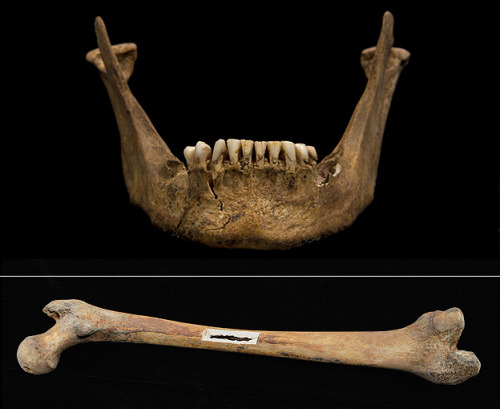thebritishnobility:Richard III : The twisted bones that reveal a king When Richard was killed
thebritishnobility: Richard III : The twisted bones that reveal a king When Richard was killed at the Battle of Bosworth Field in 1485, he was said to have been buried in Greyfriars church, Leicester. But this church was lost until archaeologists excavated a car park and discovered medieval remains. Victorian foundations had almost destroyed the entire grave and the feet were lost, but the bones still promised to provide a treasure trove of information - would they also reveal a king? Richard III was portrayed by Shakespeare as having a hunched back and the skeleton has a striking curvature to its spine. This was caused by scoliosis, a condition which experts say in this case developed in adolescence. Rather than giving him a stoop, it would have made one shoulder higher than the other. Highlighted are the facing sides of the 10th and 11th thoracic vertebrae, showing uneven growth as the spine bent. Evidence of a number of wounds were found on the skeleton but the face area was largely unmarked, apart from a sliced cheekbone. The skull has undergone a CT scan and the results will be used to reconstruct the king’s appearance. No portraits made during his lifetime have survived and some later copies show signs of having been altered to make him appear more sinister. The back of the skull shows dramatic injuries. One consists of a hole near the spine, where a large piece of bone has been sliced away by a heavy bladed weapon such as a halberd. This, along with a smaller wound opposite, may well have been a fatal injury. A smaller dent which cracked the inside of the skull, is thought to have been caused by a dagger. There are a further five wounds on the skull, all inflicted around the time of death. The teeth of the skeleton have provided important information. As well as evidence of disease and tooth decay, calcified plaque can be analysed for evidence of diet and environment. He had lost several of his back teeth before he died, probably due to dental caries. DNA samples were extracted from the teeth and the right femur to compare with known descendants of Richard’s family. Despite the potential for DNA to degrade, a match was found. The back of the skull shows dramatic injuries. One consists of a hole near the spine, where a large piece of bone has been sliced away by a heavy bladed weapon such as a halberd. This, along with a smaller wound opposite, may well have been a fatal injury. A smaller dent which cracked the inside of the skull, is thought to have been caused by a dagger. There are a further five wounds on the skull, all inflicted around the time of death. Interactive feature produced by Greig Watson, Christine Jeavans, Mick Ruddy, Sophia Domfeh and Paul Kerley. Photographs by University of Leicester and Jeff Overs. Portrait of Richard III: Collection of the Society of Antiquaries of London. Cannot contain excitement, behold the awesome power of Anthropology, or more specifically Archaeology/Osteoarchaeology! -- source link
#archaeology#anthropology#biological anthropology#osteoarchaeology#skeleton
